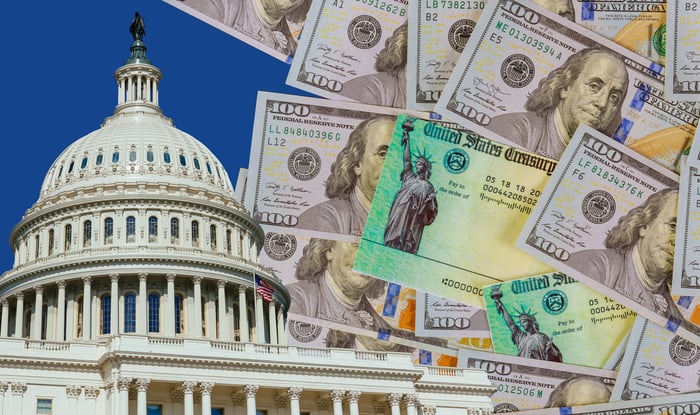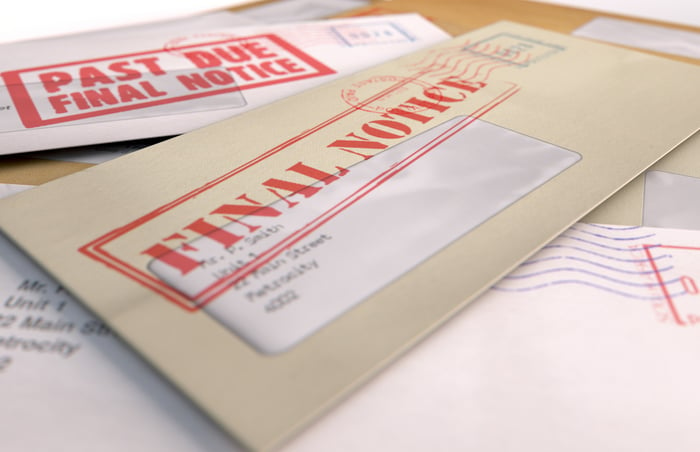It's been nothing short of a crazy year for Wall Street and investors. The panic and uncertainty caused by the unprecedented coronavirus disease 2019 (COVID-19) pandemic initially sent the broad-based S&P 500 (^GSPC -0.60%) lower by 34% in just under five weeks. The 17 calendar days it took for the index to fall from an all-time high into bear market territory, as well as the roughly four calendar weeks it took for losses to total more than 30%, are both records.
However, we've also witnessed the most ferocious rally in the history of the benchmark S&P 500. It took less than five months for the index to erase all of its coronavirus crash losses. As of this writing, it still sits higher on a year-to-date basis despite this week's losses.
Historically, buying equities during periods of correction has proved to be a smart move. That's because every correction in stock market history has eventually been erased by a bull market rally. If investors are patient enough and diligent about choosing great businesses, operating earnings growth favors equity valuation expansion over time.

Image source: Getty Images.
High valuations alone don't merit a stock market crash
But after witnessing one of the most violent bear market crashes in stock market history and its subsequent snapback rally, I can't help but feel that Wall Street is set up for disappointment.
Many folks, including myself, have pointed to valuation as a reason to be concerned about a second stock market crash. The Shiller price-to-earnings ratio -- a P/E ratio based on average inflation-adjusted earnings from the previous 10 years -- currently sits at 33. It has only spent any considerable amount of time above a P/E ratio of 30 on three occasions: just prior to the Great Depression, just prior the bursting of the dot-com bubble, and just prior to the fourth-quarter swoon for equities in 2018. In other words, a Shiller P/E above 30 is usually bad news.
Then again, we've learned that valuation can be an arbitrary indicator for game-changing businesses. Dominant players in an industry, like Amazon, Netflix, and Shopify, pay little heed to traditional fundamental metrics and continue to head higher.
Generally speaking, valuation isn't enough justification for a stock market crash.
This is what a perfect storm looks like for equities
However, that doesn't mean the stock market gets a free pass. Right now, there are three monumental catalysts that bode ill for equities. Even with an exceptionally dovish Federal Reserve blowing wind in the sails of the stock market, a perfect storm appears to be brewing that could ravage equities in the months ahead.

Image source: Getty Images.
A significant decline in share buybacks and dividends
What does a perfect storm look like for the stock market? First, there are significant drop-offs in corporate buybacks and dividends paid. It's no secret that common stock repurchases have been a key driver of demand for equities over the past decade. In total, Yardeni Research found that cumulative buybacks for S&P 500 companies since Q1 2009 totaled $5.63 trillion through Q1 2020.
But 2020 is likely to produce the lowest level of share buybacks in years. The Federal Reserve put its foot down on big bank buybacks in the third quarter in an effort to ensure that financial institutions shore up their cash positions. Bank of America (BAC 3.44%), which declared a combined $26 billion buyback and dividend program in June 2018, has seen only a portion of its $37 billion buyback and dividend program fulfilled since June 2019. While Bank of America's dividend is untouched, only some of its nearly $31 billion worth of share repurchases were fulfilled.
We've also witnessed dividends being slashed or axed completely. Plunging crude prices have forced some shale producers, and even integrated oil and gas giants (e.g., BP), to cut or halt their dividends. The same could be said for the airline industry, where virtually all airline stocks have suspended their dividends and share repurchase programs.
Without these shareholder perks, demand for equities could slow considerably in the quarters that lie ahead.

Image source: Getty Images.
A lapse in stimulus money
Though Wall Street doesn't seem to care too much about the ongoing impasse in Washington over another round of coronavirus stimulus, it should be concerned.
Despite the stock market showing pockets of strength within cybersecurity, telemedicine, and pretty much anything to do with cloud computing, the heart of the U.S. economy is built around consumption. In fact, around 70% of U.S. gross domestic product is reliant on consumption. Unfortunately, consumption is precisely what's threatened by the current stimulus standstill on Capitol Hill.
At the end of July, enhanced unemployment benefits ended. The enhancement provided an extra $600 a week to unemployed beneficiaries between April 1 and July 31. Though this extra benefit was never designed to be permanent, it was also given with the assumption that the economic rebound in the U.S. would be swift. It hasn't been. The July 2020 unemployment rate of 10.2% is higher than it was at any point during the Great Recession, and harkens back to steady double-digit unemployment rates last seen during the 1930s.
These enhanced unemployment benefits, along with the Economic Impact Payments that were sent out in April and May, helped avert rental evictions, home foreclosures, credit delinquencies, and other issues. With these sources of stimulus currently gone, tens of millions of Americans could soon face serious financial crises that will have a profoundly negative impact on consumption.

Image source: Getty Images.
A financial sector maelstrom
The final puzzle piece is that the financial sector may come apart at the seams.
While it's true that financial institutions are much better capitalized than they were entering the Great Recession, bank stocks are going to get hit from both ends once the unemployed and consumers really start to feel the sting of no additional stimulus. On the one hand, the Federal Reserve's pledge to keep lending rates at or near record lows for the next couple of years will constrain banks' interest income earning potential. On the other hand, reduced earning capacity will likely cause loan delinquencies to soar in upcoming quarters.
We really don't know just how bad things could get for banks in the United States. In August, the Mortgage Bankers Association reported that the delinquency rate for mortgage loans on one- to four-unit residential properties rose 386 basis points from the sequential first quarter, constituting 8.22% of all outstanding loans by the end of the second quarter. That's the biggest quarterly increase since the MBA began tracking loan delinquencies in 1979.
We also entered 2020 with auto loan delinquencies hitting their highest level since 2011, according to the American Bankers Association. Auto loans don't generate nearly the same financial concern as delinquent home mortgages, but an ongoing rise in auto loan delinquencies could hurt bank bottom lines.
The financial sector is often heralded as the backbone of the U.S. economy. If it falters even more than it already is? Look out below for equities.





